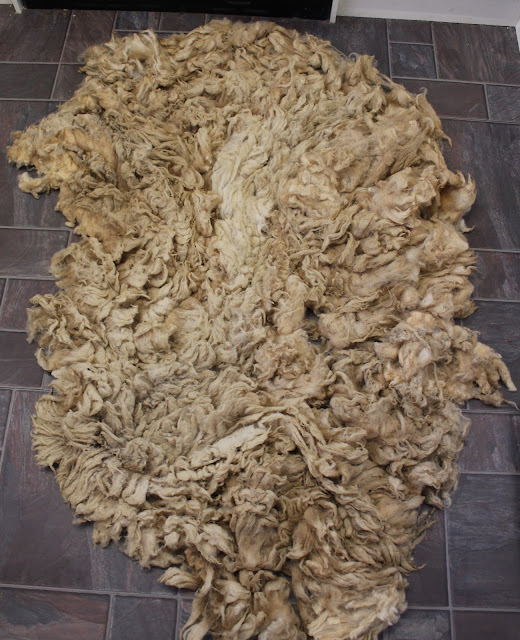The Clun Forest was established in the 19th century and takes its name from the market town on the Shropshire/Powys border and was developed from a number of now extinct local breeds. The area has been home to shepherds for about 1000 years. The native sheep were hardy and self sufficient thriving on rough grasses. In 1803, in an agricultural report these sheep were quoted as having no horns and white faces. In 1837 another statement also quotes them as having no horns and white faces but the breed was quickly changing in appearance. This was caused by cross breeding with the Kerry Hill, Hill Radnor and Shropshire which ultimately lead to the change of head colour. The Clun Forest Sheep Breeders Society was set up in January 1925 "to secure the purity of lineage and fixity of type".
They produce a medium size fleece that is 2-3kg in weight with dense locks and is of uniform quality and has a staple length of 3-4 inches (7.5-10cm). The wool is fine with an average micron count of 25-28 and is white with no kemp or coloured fibres. Takes dye nicely with clear colours.
This fleece can be spun from teased locks, it can be carded or combed. It is pleasant to spin and has lots of air and bounce with a springy quality. Is very good on its own but will also add elasticity, resilience and loft to blends with other fibres.
Yarns spun from Clun Forest fleece are similar to those of the Downs breeds but in my opinion softer and nicer and definitely for next-to-skin use.
 |
After washing the entire fleece I am left with 1225g of clean, soft fleece waiting to be combed. I have taken 100g of clean fleece and combed it and I have 61g of soft hand combed top to spin up.









No comments:
Post a Comment